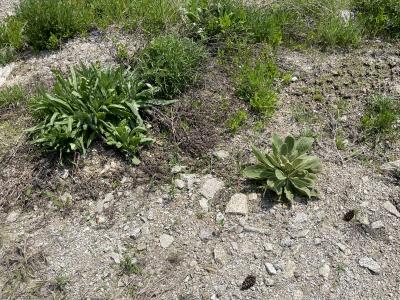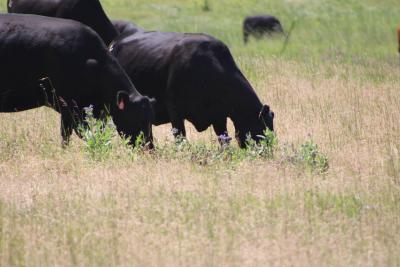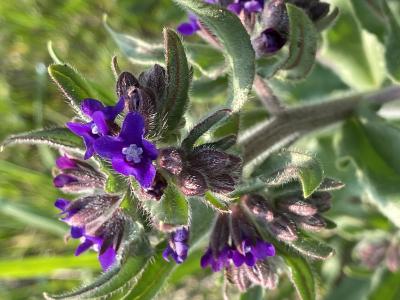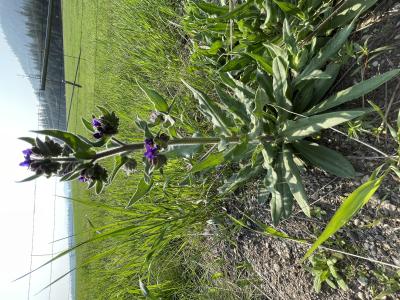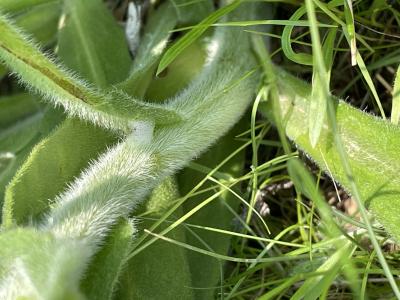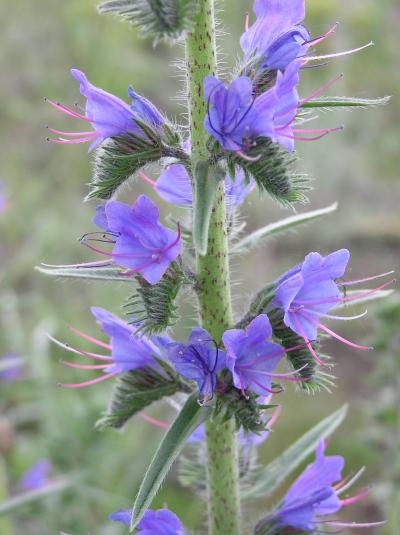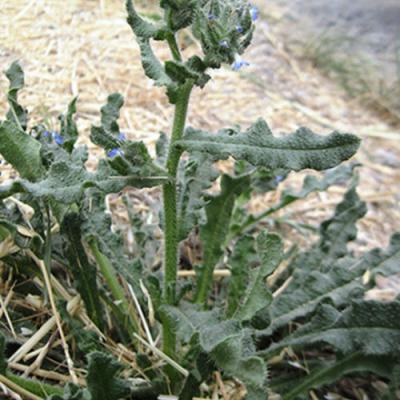Read about where the Weed Board is going, what weeds we are looking for, what we do about it, and what you can do to help!
Boo on Bugloss!
Common Bugloss, Anchusa Officianalis is a Class B noxious weed in Washington State and a mandatory control weed in Pend Oreille County.
Native to Europe and Western Asia, Common Bugloss takes root in sandy or disturbed areas such as alfalfa fields, pastures, and roadsides. Sprouting early in the year, Common Bugloss starts out as a basal rosette of leaves covered in coarse hairs. Lower leaves are narrow, oblong with a slight point, getting smaller as they rise on the plant. Common Bugloss can stand up to 1-2 feet tall at maturity.
As a perennial, Common Bugloss may flower in its first year, rapidly establishing a deep taproot and multiple fleshy and flowering stems. Countless blue-purple flowers with white centers and 5 equal lobes can bloom along the stem, each producing four seeds. That is A LOT of seeds!
Perennials are persistent plants with resprouting roots, rhizomes, stolons, tubers, or fragments that can live indefinitely and are the most difficult to control. Common Bugloss can regenerate multiple times in a single year; sometimes sprouting during every month of the season, in a single field. In freshly cut fields, it’s easy to spot as its green succulent leaves are often the first to rise, persisting through snowfall.
Common Bugloss poses a serious threat to crop production and livestock health. When cut and baled, the succulent leaves retain moisture and can mold bales and other harvests. Seeds can remain dormant in soil, hay, or in nooks on vehicles for years. Always check and clean your equipment and clothes before leaving an infested area.
While we do not know of a natural enemy for biocontrol, landowners’ best chance to control Common Bugloss is prevention. Remove rosettes before the plant has formed a deep taproot or sprouted seeds. This plant may be manually dug out using a pick or shovel, though be sure to remove all the taproot or it may resprout. If going to seed, be sure to bag the plant to prevent seeds from dropping.
Common Bugloss can also be chemically controlled using a broadleaf glyphosate herbicide with surfactant to penetrate the hairy leaves. For non-cropland application (driveways, pastures, range, habitat, and other non-productive areas ONLY), the WSU Cooperative Extension recommends using Escort, Weed Master, Roundup, Milestone, or *Tordon (*Restricted Use, WSDA Pesticide Applicators' License Required). To apply, always read the label and follow all label instructions. It's the Law! If you have questions about application or how to understand the label, give us a call to talk to one of our Field Inspectors!
Several other plants are also named Bugloss and may look similar, or be from the same taxonomical family including:
Viper's Bugloss, Echium Vulgare is a Class B noxious weed in Washington State and a mandatory control weed in Pend Oreille County.
Also known as Blueweed, Viper's Bugloss is a biennial characterized by bright blue, purple or sometimes pink flowers. With long, lance-shaped leaves, Viper's Bugloss appears spotted versus Common Bugloss, as stems are decorated with swollen white, red, purple or black bumps. Control methods of Viper's Bugloss are identical to Common Bugloss; always read the label before applying herbicides.
Annual Bugloss, Lycopsis Arvensis is a Class B noxious weed in Washington State and a mandatory control weed in Pend Oreille County.
As the name suggests, Annual Bugloss is an annual, though may germinate at any time throughout the year. Annual Bugloss is characterized by light blue flowers with a curved tube (where the flower attaches to the plant). The leaves are wavy, almost serrated with coarse, bristle hairs growing from warty bumps. Control methods of Annual Bugloss are identical to Common Bugloss; always read the label before applying herbicides.
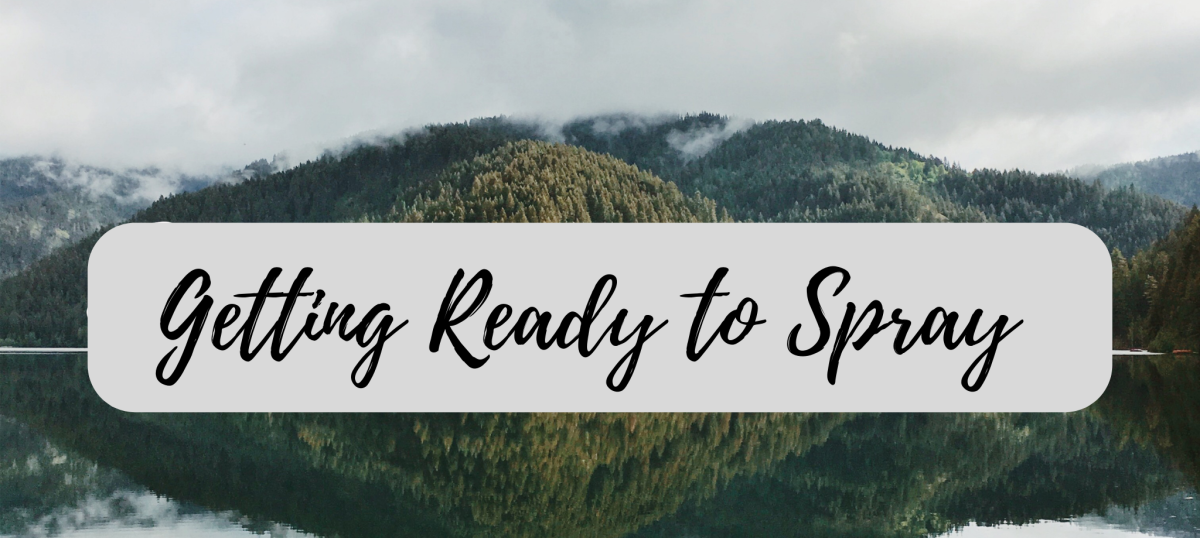
In Early April, many plants will start to sprout and bud, and our green thumbs will begin to twitch in anticipation to dig into dirt. While some of us are focused on planting our sweet peas, raking yard slash forgotten about under snowfall, and browsing plant catalogs for the newest dahlia variety, noxious weeds are awakening with tenacity!
Rosettes are the easiest growth stage to tackle noxious weeds due to underdeveloped roots, stalks, or seeds. Now is the time to spray.
Landowners participating in the Neighborhood Cost Share Program for the control of mandatory weeds
can purchase herbicides at discounted rates through the Weed Board!
Deadline to order is typically the third week of April with distribution the second week of May.
Applying herbicides, or weed killer is the quickest and fastest way to manage weeds, especially on large, overgrown, or rough terrain. Herbicides are typically purchased in concentrated liquid or granular form and often target specific plant types or species (ie. Escort is best used for broadleaf and woody plants like noxious thistles or leafy spurge).
Herbicides can be applied using a handheld, backpack, or attachment sprayer with proper personal protection equipment (PPE). We wear full length pants, shirts, non-permeable shoes and gloves, and sun protection. Don’t forget to hydrate!
Don’t have a sprayer? Rent equipment from the Weed Board!
We have backpack sprayers for small-medium size projects & 100-gallon vehicular slide-in sprayers for large applications.
Calibrating your Sprayer
Calibration is an important practice to ensure you are applying the correct amount of herbicide to an affected area based on the spray pattern and speed. Want to follow along? Watch this video!
- Measure an 18.5’ x 18.5’ area.
- Fill your sprayer with water.
- Test your spray pattern and adjust as it is appropriate for the application and conditions. You want to aim for a circular form that does not drift. If there’s more wind, increase the droplet size by rotating the tip of your sprayer wand. If the wind persists and you have drifting, wait until it’s calm.
- Time yourself spraying the area entirely. The spray coverage should be wet, but not soaked. Remember pauses.
- Then, spray water into a bucket using the same hand pressure or grip, for the same amount of time. If you paused while spraying the 18.5’ area, then pause when spraying into the bucket.
- Measure the contents of the bucket in ounces.
Now let’s do some math!
The area tested represents 1/128th of an acre. The ounces used to cover the 18.5 sq ft calibration area equal the gallons required to spray an acre. To calculate the ounces of herbicide needed to mix per gallon, divide the recommended rate per acre (in ounces, found on the herbicide label) by the number of gallons per acre (as calculated during calibration).
Example: The recommended herbicide application rate per acre is 5 oz. Your tested spraying rate per acre is 36 gallons.
5/36 = 0.1389 oz/gal 0.1389 round to nearest eighth= 1/8 oz/gal.
If 1 oz = 2 Tablespoons, 1 Tablespoon = 3 teaspoons then…
1/8 oz / 1oz = x / 6t, x= ¾ teaspoons of herbicide per gallon of water
Start Mixing:
- Half-fill your spray container with water, measured in gallons.
- *Add activator & mix well.
- Combine with ¾ teaspoon of herbicide per gallon of water, or as recommended on the label.
- *Add your surfactant & mix well.
Adjuvant (activators and surfactant) rate recommendations are by volume of water, varying by brand or type. Generally, add 1T of activator and ¼-1/2 t of surfactant per gallon of water. Always, READ THE LABEL.
Field Application & Records:
When deciding how to apply pesticides, consider the target weed and the size of the infestation. If the infestation is large and widespread, a broadcast treatment might be ideal. If the emergence of the target weed is relatively new, spot treatments might suffice. noxweedinfo [at] pendoreille.org (Pend Oreille County Weed Board staff) can help you decide which application method and product is right for you and your property.
Whenever applying in the field, a detailed record must be kept. The Washington State Department of Agriculture has multiple versions available for ease of use; Version 1 is a generic form for all applicators and may be used for a single application. Ideal record keeping includes specific details including the date and time of application, specific location and size of application, targeted weed and product used, wind direction and velocity, air temperature, and method of application.
Sometimes, WSDA will request records. Additionally, if applying 1+ acres of agricultural land, a field map must be drawn. Record keeping the conditions during the application helps applicators adjust future treatments based on the success of the prior. If the application was successful, future conditions will want to be replicated. If many plants were not affected and the wind speed was nearly 10 MPH, apply on a day with lower wind speed, or adjust spray pattern for a larger spray droplet.
Definitions (the big words):
Adjuvants are substances added to a spray-herbicide formula to modify or improve effectiveness of the application. Adjuvants include:
- Activators like ammonium sulfate help improve the effectiveness of herbicide to absorb into plant tissues and retain after rainfall and heavy sun.
- Surfactants like non-ionic surfactants alter the application of spray droplets. Surfactants are particularly important in areas with hard water as herbicides don’t mix well with high particulate water, or on plants with hairy or waxy leaves. Surfactants include stickers, penetrants, drift retardants, thickeners, and anti-foaming agents.
Noxious Weeds are a plant defined by law as being particularly troublesome, undesirable, and difficult to control. Noxious weeds in Pend Oreille County are categorized:
Category 1: weeds legally required to be controlled to prevent seed prevention until eradication. I.E. Bighead Knapweed, Common Bugloss, Flowering Rush, Leafy Spurge, Kochia
Category 2: weeds common and legally required to be contained to reduce negative effects. I.E. Eurasian Watermilfoil, Hoary Alyssum, Houndstongue, Common Tansy, St. Johnswort
Category 3: weeds not currently found in Pend Oreille County but monitored if discovered. I.E. Giant Hogweed, Hydrilla, Oriental Clematis, Garlic Mustard, Cordgrass varieties
Spray Pattern is the size and design of spray droplets leaving the nozzle of the sprayer. For most applications, a circular and moderate weight droplet suffices. Larger spray droplets will minimize drift. The ground should be wet, but not saturated in a single swipe.
